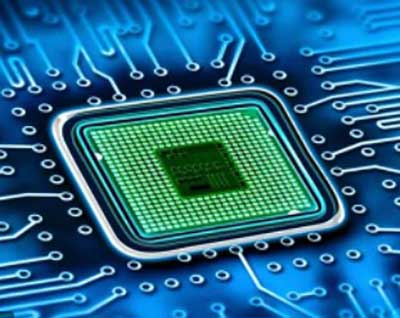Relevance: GS-3: Infrastructure
Key Phrases: Digital India RISC-V programme (DIR-V Programme); Shakti and Vega Microprocessor; ₹76,000 crore Semicon India Programme.
Context
- Minister of State For Electronics and Information Technology Rajeev Chandrasekhar launched the Digital India RISC-V programme.
- The government aims to work with start-ups to help them design and develop semiconductors and enable mass production in partnership with global manufacturing majors.
Key highlights
- By 2023-24, commercial roll out of the first indigenous chipsets and
future generation of microprocessors under the above programme is expected.
- This will meet the surging demand in semiconductors in the automotive, mobility and computing segments.
- The government expects at least a few companies will adopt their
product designs to DIR-V products Shakti and Vega before 2023-24.
- When the silicon is ready, they can start manufacturing and incorporating chips in the products.
The Story So Far
- Using open source architecture two microprocessors have been
developed.
- Shakti (32 bit) by The Indian Institute of Technology (IIT) Madras and
- Vega (64 bit) by Centre for Development of Advanced Computing (CDAC)
- Administrative appointments in the DIR-V programme.
- Professor V. Kamakoti (IIT-Madras director) has been appointed as the chief architect and
- CDAC-Thiruvananthapuram scientist Krishnakumar Rao as the programme manager.
DIR-V Programme: In Details
- Due to an integrated multi-institutional and multi-location team,
- The programme will consolidate and leverage the ongoing efforts in the country.
- Finalise the formal architecture and target performance of chipsets,
- Support original equipment makers.
- The DIR-V initiative is part of the government’s ₹76,000 crore effort to build a semiconductor ecosystem in the country.
- The partnership between the Shakti and Vega teams and overall DIR-V programme with platform companies such as HP, VVDN, and Apple and a large number of companies in the electronic ecosystem will help create design wins around the DIR-V family of products Shakti and Vega.
Importance of The Programme
- Usage of semiconductors
- India will use semiconductors worth $70-80 billion to manufacture electronics products worth $300 billion by 2026 (government’s vision document).
- Atma Nirbhar
- The Centre is aiming to make the country self-reliant in the semiconductor segment.
- Fighting off Cost-Push inflation
- The recent shortages of semiconductor has led to an increase in input costs for products and services, in turn leading to increasing inflation.
- Capacity Development and rise as a manufacturing hub
- India also aims to build semiconductor fabs and has sought interest from global majors for setting up manufacturing plants in the country, which will entail billions of dollars in investment.
- Securing Strategic interests
- Semiconductors are strategically important and can be used for snooping and espionage, hence developing domestic capabilities will negate any such potential threats.
Developments
- Proposals from 5 firms to set up electronic chip and display manufacturing plants with an investment of ₹1.53 trillion under the Semicon India Programme, which entailed incentives to the tune of ₹76,000 crore has been received.
- Vedanta Foxconn JV, IGSS Ventures, and ISMC have proposed to set up electronic chip manufacturing plants with $13.6 billion investment and have sought the support of $5.6 billion from the Centre under the ₹76,000 crore Semicon India Programme.
Key concepts
- RISC - Reduced Instruction Set Architecture
- These are a type of processors.
- These have a smaller set of instructions with few addressing nodes.
- Design Linked Incentive Scheme
- Launched in December 2021
- Aim is “To create a vibrant ecosystem for Semiconductor Chip Design in the country”.
- C-DAC will be the nodal agency.
- Has 3 components:-
- Chip Design infrastructure support:
- C-DAC will set up the India Chip Centre to host the state-of-the-art design infrastructure and facilitate its access to supported companies.
- The Product Design Linked Incentive:
- Reimbursement of up to 50% of the eligible expenditure subject to a ceiling of 15 Crore per application will be provided as fiscal support to the approved applicants who are engaged in semiconductor design.
- The Deployment Linked Incentive:
- For incremental sales.
- Chip Design infrastructure support:
Source: Live Mint
Mains Question
Q) What is the Digital India RISC-V programme? Explain its benefits.







